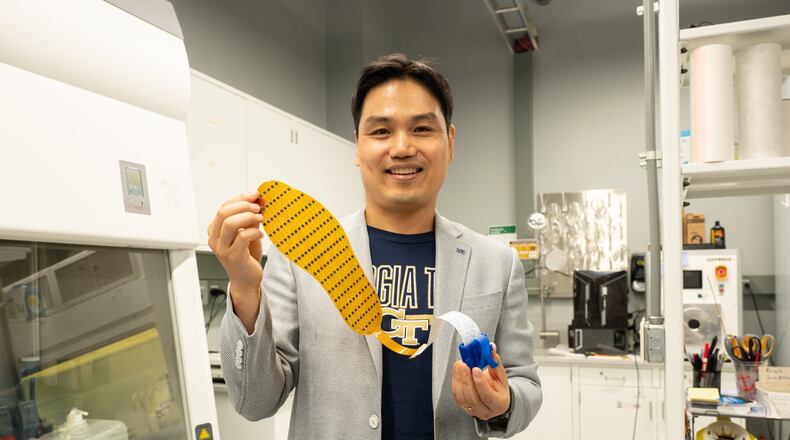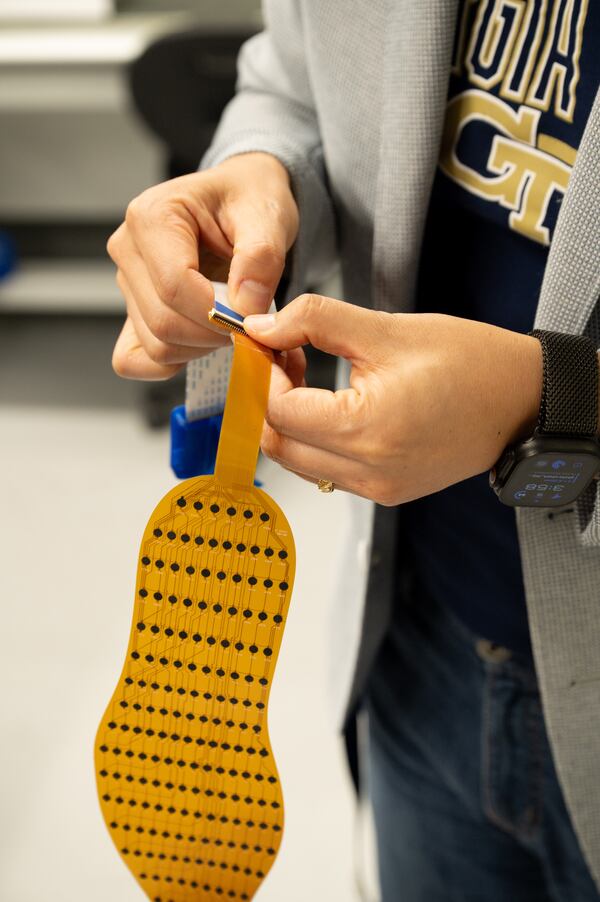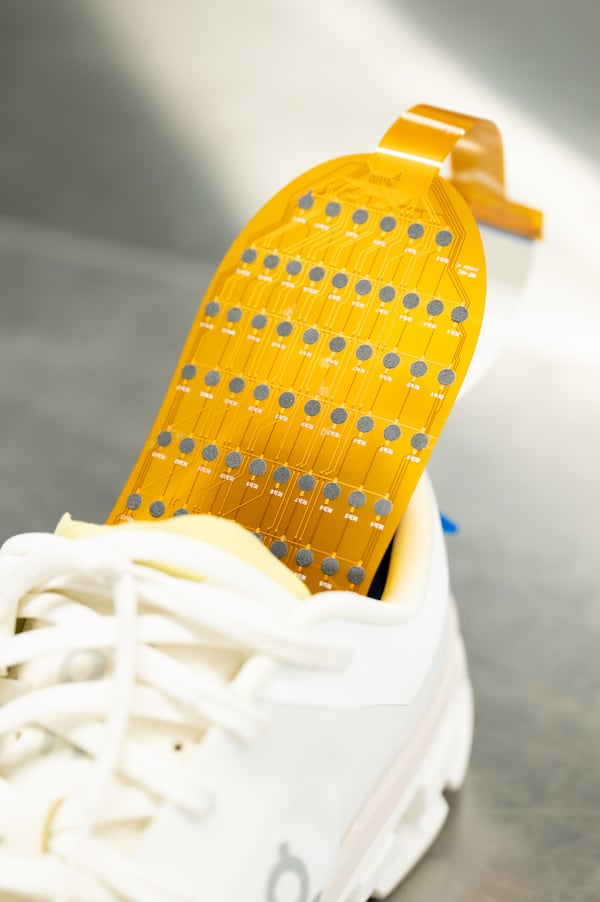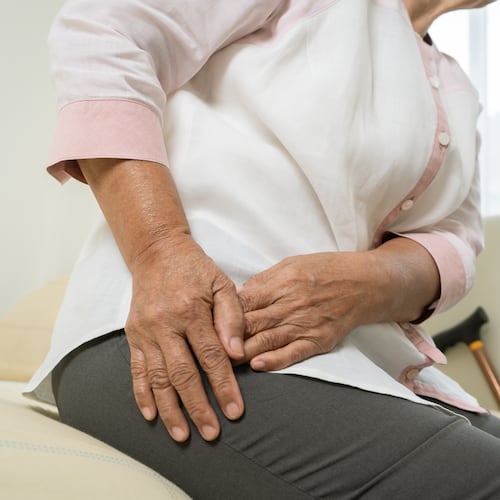For people with Parkinson’s, stroke survivors and older adults, the constant fear of falling lingers with every step they take — cutting into their quality of life and affecting their independence.
Researchers at Georgia Tech have developed a new smart shoe insert with plans to better monitor foot placement for people at higher risk of falls. Designed using 3D printing electronics, the insert will serve as a low-cost and less invasive version of a product with broad implications for anyone who can benefit from the technology.
“Overall, I think I’m very excited about the fact that we can make it really low cost,” lead researcher Hong Yeo told The Atlanta Journal-Constitution.
Credit: Georgia T
Credit: Georgia T
Yeo, professor of mechanical engineering and director of the Wearable Intelligent Systems and Healthcare Center (WISH) at Georgia Tech, and his almost 30-person team developed the shoe insert with patients in mind.
“I’m not a doctor, I’m an engineer,” Yeo said. “So when it comes to developing new technologies, I always get inspiration and motivation from meeting with clinicians and physicians.”
The insert utilizes more than 170 flexible pressure sensors that measure plantar pressure in the foot, which is one of the key indicators of walking stability. With a Bluetooth connection to smartphones, the insert will allow for continuous analysis of one’s gait, enabling real world monitoring for better fall detection.
“It can provide that work of carefully and accurately detecting walking behavior in terms of weight distribution, so that we can come up with a feedback-based therapy, or even design a custom shoe,” Yeo explained.
And because it is created to be 3D-printed, Yeo believes the insert will be able to hit the market at a target price of under $100, while other similar technologies are “mostly in the range of 500 (dollars) or higher.”
“Our method of printing is kind of brand new, and compared to other technology is very scalable,” Yeo said. “That’s the biggest advantage of using this 3D printing technique.”
Outside of supporting people with mobility issues, the shoe insert may also help athletes track their performance and make changes for the future.
“I think this device can be helpful for them to monitor how they move during their activities and then come up with a customized solution,” he explained, “so that we can maximize their performance and at the same time lower possibilities of injury.”
Credit: Georgia Te
Credit: Georgia Te
As of right now, Yeo is looking for the right team to help him bring this product to market, taking it from the research lab into real people’s hands.
“At the end of the day, it’s always my personal goal to see final products used to help people.”
About the Author
Keep Reading
The Latest
Featured




